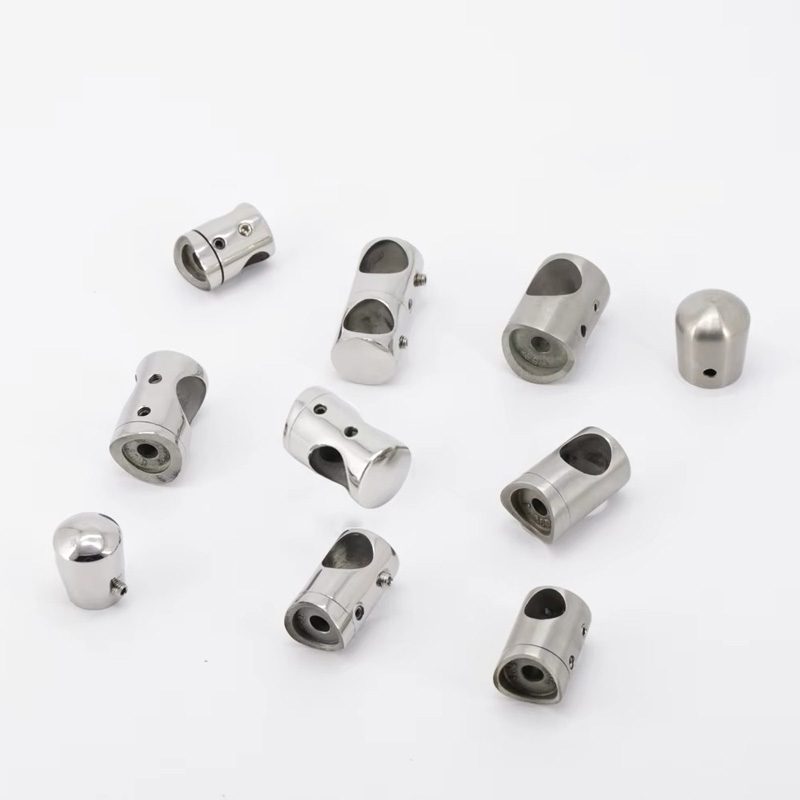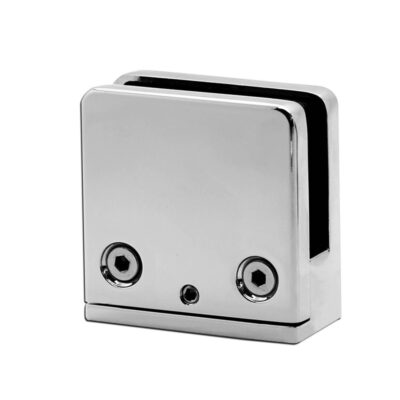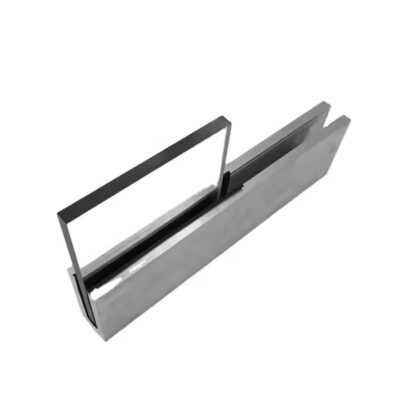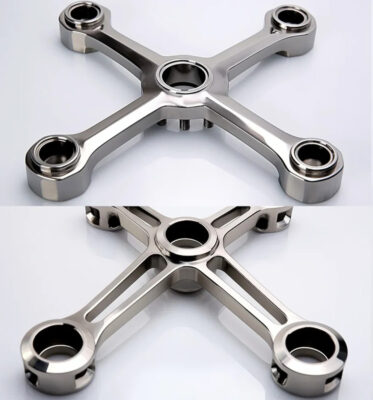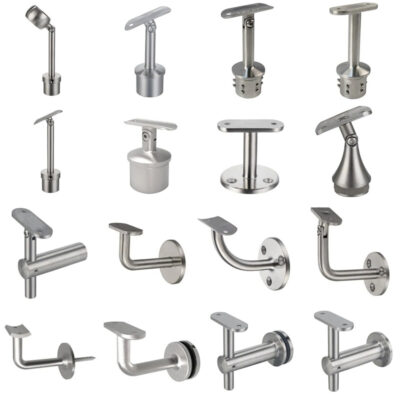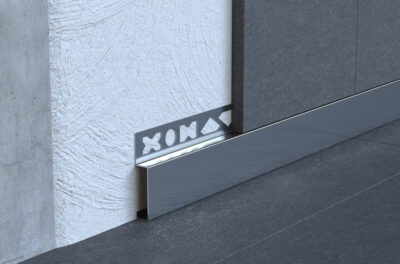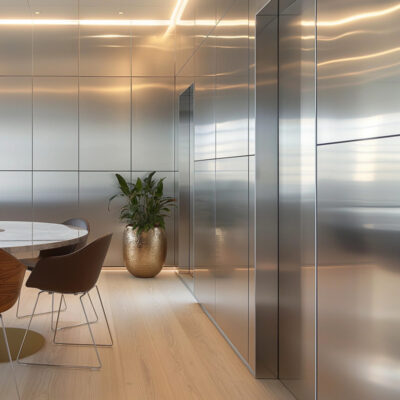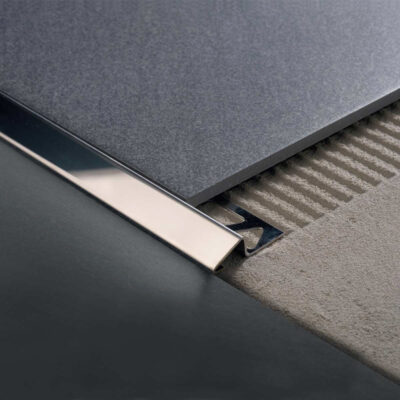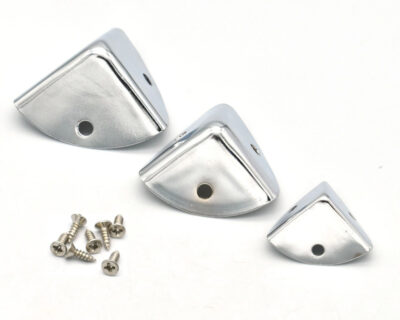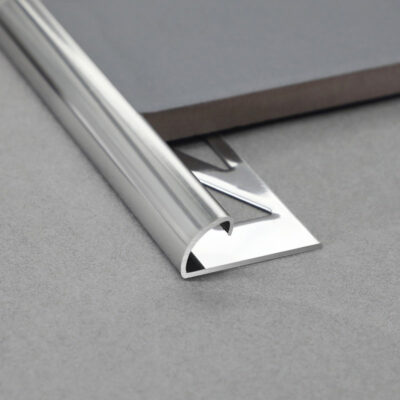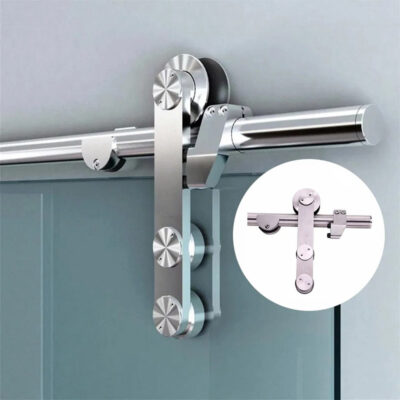Understanding Stainless Steel Balustrade Connectors: Beyond the Basics
The first time I encountered a failed balustrade installation, I was struck by how such small components could compromise an entire architectural feature. A commercial project I was consulting on had beautiful glass panels, premium handrails, but substandard connectors that began to show stress fractures within months. This experience fundamentally changed my approach to balustrade systems.
Stainless steel balustrade connectors are the unsung heroes of modern architectural design, creating secure connections between posts, handrails, and infill panels while remaining largely invisible to casual observers. These precision-engineered components bear the structural load of the entire balustrade system, transforming separate elements into unified safety barriers that must withstand significant forces.
What sets quality connectors apart is their material composition. Marine-grade 316 stainless steel offers superior corrosion resistance compared to the more common 304 grade, containing molybdenum that provides exceptional protection in harsh environments. This distinction becomes crucial in coastal properties or areas with high pollution levels where cheaper alternatives might fail prematurely.
The range of connector types is surprisingly diverse. Glass clamps secure panels without drilling, standoff mounts create floating effects, and adjustable brackets accommodate irregularities in construction. Each type serves specific architectural needs while maintaining compliance with building regulations that vary significantly across regions.
E-Sang and other premium manufacturers have developed specialized connector designs that solve specific challenges, from accommodating thermal expansion to providing clean aesthetic lines while exceeding load requirements. The evolution of these components reflects broader architectural trends toward minimalism and transparency in design.
The Technical Landscape: Components and Specifications
I recently spent an afternoon with a structural engineer analyzing load test results for various balustrade systems. What struck me wasn’t just the impressive performance figures but how differently each connector type distributed forces throughout the system. This technical nuance is rarely discussed but fundamentally impacts both safety and longevity.
Stainless steel balustrade connectors encompass several distinct categories, each with specific applications:
Glass Clamps and Spigots
These connect glass panels directly to floors, walls, or posts without drilling through the glass. They typically feature:
- Protective EPDM or neoprene inserts to prevent glass-to-metal contact
- Torque-specific mounting bolts that prevent over-tightening
- Minimum glass thickness requirements (usually 10-12mm for toughened glass)
Modern glass clamps often incorporate precision-engineered pressure distribution systems that eliminate stress points on the glass, significantly reducing the risk of failure even under extreme loads.
Handrail Brackets and Supports
These components connect handrails to walls or posts and must bear substantial horizontal and downward forces. Key specifications include:
- Load capacity (typically rated for minimum 0.74kN/m horizontal force)
- Projection distance (available from 50mm to 150mm+)
- Adjustability features to accommodate installation variations
Baluster Connectors
These join vertical posts to horizontal elements and come in several configurations:
- Saddle connectors for connecting posts to base shoes
- Cap rails that secure glass or other infill materials at the top
- Adjustable connectors that accommodate angular variations
The table below outlines typical load capacities for different connector types based on material and design:
| Connector Type | 304 Stainless Capacity | 316 Stainless Capacity | Common Applications |
|---|---|---|---|
| Glass Clamps | 1.0 kN | 1.0 kN | Interior glass balustrades, light commercial |
| Floor-mounted Spigots | 1.5 kN | 1.5 kN | External terraces, commercial spaces |
| Wall Brackets (100mm) | 0.74 kN/m | 0.74 kN/m | Residential staircases, corridors |
| Post Connectors | 1.5 kN | 1.5 kN | Complex designs with multiple angles |
Material grade selection extends beyond simple corrosion resistance. While 316 stainless steel offers superior protection in harsh environments, the actual manufacturing process significantly impacts performance. Cold-forged connectors, for example, exhibit greater structural integrity than cast alternatives, particularly at stress points.
A critical but often overlooked specification is the surface finish. Brushed finishes (typically 320 grit) offer practical benefits beyond aesthetics—they show fewer fingerprints and minor scratches compared to mirror-polished alternatives. This practical consideration becomes significant in high-traffic commercial installations.
Selection Guide: Navigating the Complexity
During a renovation project last year, I made the mistake of selecting connectors based primarily on aesthetic considerations. Three months later, fine hairline cracks appeared in the glass panels. An experienced fabricator pointed out that the minimal-profile clamps I’d chosen, while visually stunning, created uneven pressure distribution—a costly lesson in balancing design with function.
Selecting appropriate stainless steel balustrade connectors involves navigating multiple variables:
Environmental Considerations
The installation environment fundamentally determines material requirements:
- Coastal locations (within 5km of saltwater): 316 grade is essential
- Swimming pools and chlorinated environments: 316 grade with additional protective treatments
- Standard indoor applications: 304 grade typically sufficient
- Industrial areas with chemical exposure: Special grades or protective coatings may be required
One architect I collaborated with in Brighton created a graduated specification—316 grade for all external connectors, transitioning to 304 for internal components beyond the entrance vestibule. This thoughtful approach optimized costs while ensuring appropriate protection where it mattered most.
Load Requirements and Regulatory Compliance
Building regulations specify minimum load requirements based on usage:
| Building Type | Horizontal Load Requirement | Recommended Connector Type |
|---|---|---|
| Residential | 0.74 kN/m | Standard wall brackets, square glass clamps |
| Light Commercial | 1.0 kN/m | Heavy-duty brackets, rectangular glass clamps |
| Heavy Commercial | 1.5 kN/m | Engineered systems, specialized spigots |
| Crowd Loading Areas | 3.0 kN/m | Custom-engineered solutions, multiple fixings |
| Note: Requirements vary by country and specific location within buildings. Always verify local building codes. |
The interaction between glass thickness and connector type creates another critical decision point. Toughened glass requires minimum edge distances from connectors to prevent spontaneous failure, while laminated glass demands specific clamping pressures to prevent delamination.
Aesthetic Integration
The visual impact of connectors ranges from deliberately prominent to virtually invisible:
- Standoff systems create a floating effect but require precise glass drilling
- Channel systems conceal fixings but demand perfect substrate preparation
- Clamp systems offer installation flexibility but remain visible
- Post systems provide traditional aesthetics with maximum strength
A museum project I consulted on required absolutely minimal visual interruption of glass balustrades surrounding a central atrium. The solution combined recessed floor channels with nearly invisible side-mounted mini-clamps, creating an almost magically unsupported appearance while exceeding structural requirements.
Installation Best Practices: Where Theory Meets Reality
I’ll never forget watching an experienced installer demonstrate the “finger test” on a freshly mounted glass balustrade. He placed his fingertips lightly against the panel and asked me to push against the handrail. The minute glass movement—barely perceptible but intentional—represented precisely calculated flex that allowed the system to absorb impact without transferring destructive force to the connectors.
Successful balustrade installation begins with thorough planning:
Substrate Assessment
Connector performance depends entirely on the substrate to which it’s attached:
- Concrete substrates require mechanical fixings (typically M8-M12 bolts) with minimum edge distances
- Wood substrates need assessment for structural integrity and appropriate fasteners
- Steel substrates may require specific isolation to prevent galvanic corrosion
- Masonry requires testing for structural integrity and specialized anchors
Precision Setting
Accuracy during installation prevents stress on components:
- Laser levels ensure perfect alignment both horizontally and vertically
- Temporary supports hold components during curing/setting periods
- Torque-specific tightening prevents over-compression of gaskets
- Sequential tightening patterns distribute pressure evenly
A critical step often overlooked is stress-testing connections before completing the installation. Applying calculated pressure to the system while connectors are still accessible allows adjustments before finishing touches make modifications difficult.
For glass systems, proper gasket installation demands meticulous attention. The table below outlines common gasket types and their applications:
| Gasket Material | Properties | Best Applications | Maintenance Notes |
|---|---|---|---|
| EPDM | Excellent weathering, moderate chemical resistance | General outdoor use, standard applications | Inspect annually for compression set |
| Silicone | Superior temperature resistance, UV stable | High-temperature locations, southern exposures | Resistant to most cleaning chemicals |
| Neoprene | Good compression recovery, moderate weather resistance | Indoor applications, areas with mechanical stress | Replace if showing signs of hardening |
| PVC | Cost-effective, limited durability | Temporary installations, indoor low-stress applications | Regular inspection required, limited lifespan |
The interaction between different metals requires particular attention. Using stainless fasteners in aluminum substrates without proper isolation can trigger galvanic corrosion that compromises structural integrity. This often manifests years after installation, making preventive measures essential.
Maintenance and Longevity: Protecting Your Investment
A coastal property I worked on provided a startling lesson in maintenance importance. Two identical balustrade systems were installed—one receiving quarterly maintenance, the other largely neglected. After just three years, the difference was striking. The maintained system remained pristine, while the neglected one showed pitting corrosion at connector points that would eventually require complete replacement.
Stainless steel’s corrosion resistance comes from a passive chromium oxide layer that forms on its surface. This layer can be compromised by:
- Chloride exposure (sea salt, pool chemicals)
- Ferrous contamination (contact with ordinary steel tools)
- Atmospheric pollutants (particularly in industrial areas)
- Improper cleaning chemicals (especially those containing chlorine)
A maintenance program for stainless steel balustrade connectors should include:
Regular Cleaning
- Fresh water rinsing to remove salt deposits (weekly in coastal locations)
- Mild soap cleaning to remove organic deposits (monthly)
- Specialized stainless cleaners for stubborn stains (quarterly)
- Protective coating application in severe environments (annually)
Inspection Routines
Regular checks should focus on:
- Signs of discoloration (indicating early corrosion)
- Connector tightness (addressing thermal expansion/contraction)
- Glass movement or unusual sounds (indicating connection problems)
- Gasket condition (compression, hardening, deterioration)
Most premature failures occur due to inappropriate cleaning methods. Abrasive cleaners damage the protective oxide layer, while chlorine-containing products (including many household cleaners) can initiate corrosion. Instead, specialized stainless steel cleaners maintain both appearance and protection.
The expected service life of quality stainless steel balustrade connectors typically exceeds 30 years when properly maintained, making them an extremely cost-effective investment despite their higher initial cost compared to alternatives.
Design Considerations: Where Engineering Meets Aesthetics
During a renovation consultation, a client insisted on ultra-minimal glass clamps that appeared impossibly delicate. Rather than immediately rejecting the request based on standard specifications, we worked with a specialist fabricator to develop a hybrid solution—the visible portion matched their aesthetic vision, while concealed reinforcement provided necessary structural integrity. This experience reinforced my belief that creative engineering can often reconcile seemingly contradictory requirements.
Modern balustrade design increasingly emphasizes:
Minimalism and Transparency
Contemporary architecture favors unobstructed views and light transmission, driving development of:
- Structural glass systems with concealed connectors
- Micro-clamps with minimized visible profiles
- Integrated lighting systems within connectors
- Frameless designs that maximize transparency
Material Contrasts
The interaction between materials creates visual interest:
- Warm wood handrails with cool stainless connectors
- Textured stone posts with sleek glass infills
- Colored glass panels with neutral metal fixings
Custom Solutions
Standard components rarely satisfy truly innovative designs, leading to specialized solutions:
- Custom angle connectors for unique geometries
- Bespoke finishes to match specific design palettes
- Modified load capacities for special applications
A particularly challenging project involved a spiral staircase with varying glass panel curvatures. Standard connectors couldn’t accommodate the continuously changing geometry, necessitating custom-machined adaptors that maintained consistent clamping pressure despite the irregular surfaces. This premium solution added approximately 15% to the project cost but enabled the architect’s vision without compromise.
Real-world Applications: From Concept to Construction
One of the most educational experiences in my career involved shadowing an installation team retrofitting a commercial office building with new balustrades. The project timeline allocated five days per floor. By day three of the first floor, they were already two days behind schedule. The issue? Connector compatibility with the existing structure. Despite thorough surveys, variations in the concrete substrate required on-site adaptations for nearly every fitting.
Residential applications typically emphasize:
- Integration with existing architectural elements
- Balancing safety requirements with aesthetic preferences
- Cost-effective solutions that don’t compromise quality
- Installation methods that minimize disruption
A particularly successful residential project utilized adjustable-angle connectors throughout, accommodating the home’s deliberately irregular geometry while maintaining consistent sight lines. The additional material cost was offset by reduced installation time and virtually eliminated the need for custom fabrication.
Commercial applications prioritize:
- Compliance with stringent safety standards
- Durability in high-traffic environments
- Standardization for maintenance efficiency
- Schedule-driven installation processes
One retail development I consulted on required balustrades capable of withstanding extraordinary crowd pressures during sales events. The solution incorporated standard-looking connectors reinforced internally and installed at half the typical spacing—invisible strength that maintained the desired aesthetic while exceeding safety requirements.
Special environments present unique challenges:
Coastal Environments
Properties within five kilometers of saltwater face accelerated corrosion. Successful installations typically feature:
- Exclusively 316L grade stainless steel
- Additional protective coatings
- Increased maintenance schedules
- Sacrificial anodes in extreme cases
High-Altitude Applications
Installations in mountain regions contend with:
- Extreme temperature fluctuations requiring special expansion allowances
- Snow loading considerations affecting connector spacing
- UV intensity demanding superior finish quality
- Remote locations necessitating simplified maintenance requirements
A ski resort project demonstrated these challenges perfectly. The solution incorporated oversized connection points, additional expansion joints, and a specialized UV-resistant coating system. Five years later, the installation remains flawless despite temperature ranges from -30°C to +30°C.
Future Innovations: The Evolution of Connection Technology
A recent trade show revealed fascinating developments in connector technology that suggest where the industry is heading. Most notable was a “smart” connector system with embedded monitoring capabilities—tracking structural loads, temperature variations, and even glass micro-movements. While currently prohibitively expensive for most applications, it illustrates the growing integration of digital technology into what has historically been a purely mechanical field.
Several important trends are emerging:
Material Sciences
Research continues to develop improved alloys and manufacturing techniques:
- Super-austenitic stainless steels with enhanced corrosion resistance
- Duplex stainless grades offering superior strength-to-weight ratios
- Advanced surface treatments that extend maintenance intervals
- Composite materials combining metal strength with polymer flexibility
Production Technologies
Manufacturing advancements are transforming connector production:
- 3D printing enables previously impossible geometries
- Computer simulation optimizes material distribution for maximum strength
- Automated quality control systems ensure consistent performance
- Precision machining reduces tolerance variations
Sustainability Focus
Environmental considerations increasingly influence connector design:
- End-of-life recyclability becoming a specification requirement
- Energy-efficient production methods reducing carbon footprint
- Longer service life reducing replacement frequency
- Responsibly sourced materials with chain-of-custody documentation
The most promising development I’ve encountered is the integration of kinetic energy absorption into connector design. By incorporating carefully calibrated flex zones, these next-generation components can absorb impact energy without permanent deformation—potentially transforming balustrade safety standards.
While premium solutions currently come with premium pricing, the pattern of innovation suggests these advanced technologies will eventually become standard features as manufacturing scales and competition increases. Forward-thinking designs should consider compatibility with these emerging standards to maximize long-term value.
Concluding Thoughts: Beyond the Specifications
When I first entered this field, I approached balustrade connectors as purely technical components defined by load tables and material grades. Experience has taught me they’re much more—they represent the critical intersection of safety, aesthetics, and longevity that defines successful architectural elements.
Selecting appropriate stainless steel balustrade connectors requires balancing numerous factors: environmental conditions, structural requirements, aesthetic preferences, installation practicalities, maintenance realities, and budget constraints. The most successful projects address all these considerations from the earliest design stages rather than treating connectors as afterthoughts.
While premium connectors require greater initial investment, they typically deliver superior value through extended service life, reduced maintenance requirements, and enhanced aesthetic quality. This perspective transforms what might appear as a simple commodity purchase into a significant architectural decision with long-term implications.
The field continues to evolve, with innovations addressing challenges in both performance and installation efficiency. Those willing to look beyond catalog specifications to understand the underlying engineering principles will consistently achieve superior results—balustrades that remain safe, visually appealing, and structurally sound throughout their intended service life.
Frequently Asked Questions about Stainless Steel Balustrade Connectors
Q: What are Stainless Steel Balustrade Connectors, and how do they function?
A: Stainless Steel Balustrade Connectors are fittings used to secure and stabilize stainless steel wires in balustrades. They play a crucial role in maintaining the structural integrity and aesthetic appeal of a stainless steel balustrade system. These connectors ensure that the wires are securely attached to posts, maintaining the necessary tension and alignment.
Q: What types of Stainless Steel Balustrade Connectors are commonly used?
A: Common types of Stainless Steel Balustrade Connectors include terminal fittings, tensioning fittings, and swage fittings. Terminal fittings serve as end connections, while tensioning fittings allow for cable tightening. Swage fittings involve crimping or swaging to secure the wire, which can be done using hand tools or hydraulic equipment.
Q: How should Stainless Steel Balustrade Connectors be installed?
A: Installation of Stainless Steel Balustrade Connectors involves precise measurement and alignment. The process typically includes threading the stainless steel wire through intermediate posts and securing it with tensioning and terminal fittings. For swaged connectors, the wire is crimped into place using specialized tools.
Q: What are the benefits of using Stainless Steel Balustrade Connectors?
A: Using Stainless Steel Balustrade Connectors offers several benefits:
- Corrosion Resistance: They are highly resistant to corrosion, ensuring durability.
- Structural Integrity: They maintain the necessary wire tension, preventing sagging.
- Aesthetic Appeal: They contribute to a sleek and modern appearance of the balustrade.
Q: Do Stainless Steel Balustrade Connectors require maintenance?
A: While Stainless Steel Balustrade Connectors are durable, occasional checks are necessary to ensure all wires remain tightly secured. Over time, wires may slacken slightly due to environmental factors. Adjustable fittings can be used to re-tension the wires periodically.
Q: Can I install Stainless Steel Balustrade Connectors myself, or do I need a professional?
A: Installation of Stainless Steel Balustrade Connectors can be done by homeowners with some DIY experience, especially with hand swaging tools. However, for more complex installations or precise measurements, it is often recommended to hire a professional to ensure compliance with local building codes and regulations.

